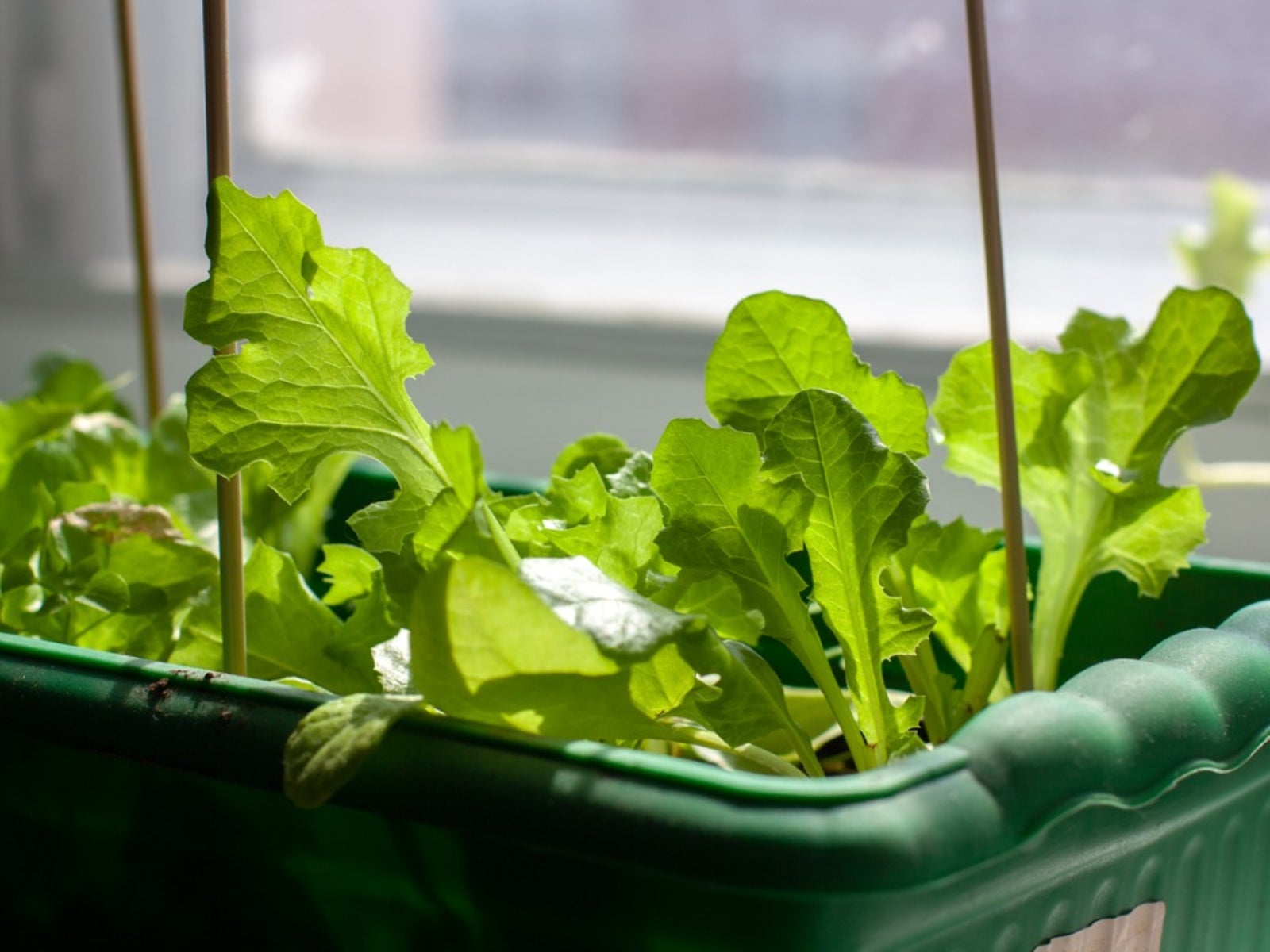Growing Lettuce Indoors: Information On Caring For Indoor Lettuce

If you like the fresh taste of homegrown lettuce, you don't have to give it up once garden season is over. Perhaps you don't have adequate garden space, however, with the right tools, you can have fresh lettuce all year. It's extremely easy to get started growing lettuce indoors and if you are a big salad eater, you'll save a ton of money doing it yourself rather than paying retail prices at the store.
How to Grow Lettuce in the Home
Choose containers for your indoor lettuce plants that hold at least ½ gallon of soil per plant. Select only high quality, loamy potting soil; organic is best and will offer the most nutrients. Place two to three seeds just under the surface of the soil in each container. Allow a little space between each seed. Water each container thoroughly and keep the soil warm. For best results, place the planters under a light for 24 hours a day. You can also cover your pot with a clear plastic bag and place it in a south-facing window. Check the soil moisture daily and water as needed. Depending on the type of lettuce planted, seeds will begin to sprout in 7 to 14 days. Take the bag off when the lettuce begins to sprout.
Caring for Indoor Lettuce
After the seeds have sprouted, thin each container down to one plant. Water lettuce plants at least twice a week. Check the soil daily, it shouldn't dry out completely. As long as you have used high quality soil and seed, there's no need to fertilize the plants. Keep lettuce plants in a location where they receive six to eight hours of light and temperature remains at least 60 degrees F. (16 C.). If you don't have a sunny place to put the lettuce, you can use a few different types of lights, including compact fluorescent lights (15 watts) located above your lettuce. (These are fantastic if you're on a budget.) Position the lights about 3 inches (8 cm.) away from your plants. If you have a larger budget, invest in high output T5 fluorescent lighting. Harvest lettuce when it reaches a desirable height.
Gardening tips, videos, info and more delivered right to your inbox!
Sign up for the Gardening Know How newsletter today and receive a free copy of our e-book "How to Grow Delicious Tomatoes".
-
 Get Ready For A Summer Of Hummers! Grow These Full Sun Hummingbird Plants and Flowers
Get Ready For A Summer Of Hummers! Grow These Full Sun Hummingbird Plants and FlowersIf you’re lucky enough to enjoy a sunny backyard, make sure you are maxing out on your pollinator opportunities and grow these full sun hummingbird plants and flowers
By Tonya Barnett
-
 12 Lush Alternatives To A Lawn For Sustainable Spaces
12 Lush Alternatives To A Lawn For Sustainable SpacesAlternatives to a lawn are beautiful and also beneficial to your local ecosystem and its pollinators. Explore our top picks for plants to replace grass.
By Tonya Barnett